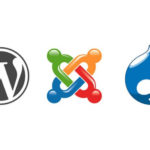Build or Use Open-Source Software: Overcome the Dilemma to Forge your Path

Which business is not enticed by free capabilities that come with open-source software?
Almost every business!
And that is the reason why enterprises use these tools in some or other way. The rise is attested as the global open-source software market size is expected to expand at a CAGR of 18.09% during the forecast period from 2023 to 2030.
Has this rise of the “open source” philosophy impacted custom development or is just downplaying it?
CompTIA has found that there are around 525,000 software development businesses in the US alone that are developing specialized applications for some businesses. From this we can confidently say that there are organizations that build custom applications. We substantiate it further as the global custom software development market size was valued at USD 28.2 billion in 2022 is estimated to register a CAGR of over 21.5% between 2023 and 2032.
So, there is a parallel growth of both – open source is rising but the choice to build your own software is still important in the business world.
Many businesses start their journey with open-source capabilities and as they graduate into a well-established enterprise, where they feel the need to address niche questions, they start building their own software.
Industry leaders such as Meta and Netflix offer a narrative of this open source to build transition. The sheer scale and unique requirements of Meta necessitated a more tailored approach, which culminated in the development of the HipHop Virtual Machine (HHVM). When Netflix grew into a global streaming giant with millions of subscribers, a specialized platform was more than necessary. It invested in building its own custom applications and infrastructure. Netflix Content Delivery Network (CDN) is one amongst them.
The following discussion and analysis are intended to guide you in understanding both these options in a fair way. Go through them and considering the stage of your business, identify the best-fit.
Open-source, the Go-to Choice
The origins of open-source software trace back to a time when the world was far from a digital utopia, and the concept of collaborative software development was in its nascent stages. It was a response to the traditional proprietary model, which limited access to the source code and stifled innovation.
Open-source software, as the name goes, is software that is freely available to the public, allowing anyone to implement and use it. Tools such as Odoo, ApacheOpenOffice, and Drupal are open-source software applications. The arrival of such tools marked a departure from the traditional closed-source approach, where access to software was controlled through licenses.
Today, open-source software has become the backbone of the tech industry. 78% of businesses have embraced open-source in their operations. One compelling example of the power of open-source is that of Linux which is used by 96.3% of the world’s top one million websites.
A significant portion of industry giants have recognized the potential of open-source and have integrated it into their operations. Over 90% of Fortune 500 companies have incorporated open-source software into their tech stack, showcasing its value proposition. Further, 30% of Fortune 100 companies have OSPOs (open source point of sale), emphasizing the strategic importance placed on open-source initiatives.
The shift is not just a trend, but a strategic move by businesses to leverage the inherent advantages of open-source. Prominent industry leaders harnessing the power of open-source include Reddit, Twitter, Spotify, PayPal, and Intel. These companies have not only adopted open-source solutions but have also actively contributed to the open-source community.
What do you get?
As a startup that is actively looking for an application to meet its needs, an enterprise open-source software will always be highly valuable. Because, open-source offers the flexibility to start small, which can allow businesses in their early stages to test the software’s suitability before implementing it on a larger scale. The incremental approach allows for a more controlled and efficient adoption process.
Low total cost of ownership with open-source is a major boon. A study by UC Berkeley Professor Henry Chesbrough, titled “”Measuring the Economic Value of Open Source Software: A Survey and a Preliminary Analysis” has brought forward the economic viability of open source applications. Through it, businesses can redirect their budget towards other critical areas, maximizing their resources for innovation and growth.
Open source is also glorified by its community-driven development model. Enthusiasts across the globe contribute to open-source projects and keep enhancing software’s abilities. It is one compelling reason to use open source software. Active participation from a diverse community of technical experts and users leads to a more robust and reliable product over time. Most open-source applications remain at the forefront of technological advancements due to such contributions. Take for instance Grafana, a leading open source tool for visualization and dashboarding. It has a large community of experts who keep improving its functionalities.
Another nice aspect of open source is the global support and extensive documentation that along with community assistance creates a valuable support network. Users have access to forums and online communities, which streamlines troubleshooting and knowledge sharing. With this collaborative environment, enterprises feel encouraged to not only use open source software but also contribute to them.
With all these advantages of open source philosophy, the final question that remains is about the choice. Which open source CMS platform should I choose or which open source ERP would best meet my enterprise needs are the kind of questions which you will answer, so that you don’t regret your choice.
Also Read: Securing Advantage with Open-source SaaS platforms
What are some pitfalls?
Enterprise open-source software comes with its share of challenges. One notable drawback is the potential lack of vendor support. Unlike proprietary solutions, which often come with dedicated vendor support, open source tools rely on a community, which may not always provide the same level of responsiveness or reliability.
Enterprise tools have to exhibit some compliances as the nature of the business process or global and local regulation will require. Organizations like the Federal Deposit Insurance Corporation or laws like the Health Insurance Portability and Accountability Act do not authenticate the use of open source tools. As a result, open source will not benefit industries that demand strict compliance to regulations.
When it comes to use, open-source solutions can be more intricate to set up and configure. It may demand a higher level of technical expertise from users that they may not be possessing. Integrating open-source software with existing systems and tools can also pose difficulties, as it may not have the same level of compatibility and support as its proprietary counterparts.
Vulnerable to security threats if not diligently maintained and updated is a key issue with open source tools, as they are the disposal of a vast community. Moreover, with multiple versions, the ecosystem can easily become fragmented, which makes it burdensome to maintain and update.
However you can capitalize on the benefits of open source to meet your custom needs. For instance, you can customize a CMS for your web development needs. In that case, you will have to find a suitable open source CMS development company to guide you. But first assess and determine the feasibility of such customizations.
The Choice to Build: Leading Your Own Way
Let’s imagine a case where you want your software to perform 50 odd functionalities, but the available open source tool offers you only 35 of them. Building your own software fills that gap of 15. So, there are scenarios where open source solutions fall short, and are unable to address the unique demands of enterprises.
Unlike pre-packaged or even off-the-shelf software, which may come with a predefined set of features and functionalities, a software built with custom requirements in mind provides the flexibility to incorporate functionalities essential to the operation of an enterprise.
As per Deloitte, 79% businesses acknowledge the importance of custom-built applications in their digital transformation initiatives. Especially, in highly specialized industries like aerospace or defense, where specific regulations and requirements govern operations, relying on open-source tools may fall short of meeting requirements. For instance, in industries subjected to rigorous regulatory frameworks, such as pharmaceuticals or energy, businesses are compelled to go with the build option. In such cases, organizations find themselves compelled to engineer their own software solutions, so that they can tackle the distinct challenges they are facing.
Similarly, industries reliant on complex data analysis and modeling, such as financial services and healthcare, often encounter limitations in existing open-source tools. Businesses within these sectors find it imperative to have software, built and tailored precisely to the demands of their industry.
Also, organizations entrenched in legacy systems can encounter issues in integration, posing a formidable challenge when adopting open-source tools. You may find it difficult to assimilate open source tools in your existing system.
How does it add value?
A tailor-made software in any case is a strategic asset. One of the most significant benefits is the unparalleled level of control it provides. Unlike open source, it grants businesses complete ownership and authority over the product.
While the initial investment in developing a software may appear substantial, in the long-term, it proves to be a prudent financial decision. An open source that comes as a package bundled with specific features, some of which may not be of your use. However, that is not the case with what you build and so every penny you pay is worth it.
A custom-built application is also adaptable. A few days later, when you feel the need to add more features, you can accommodate them. Businesses remain nimble and responsive, at least in terms of integrating additional functionalities or adjusting existing features.
Lastly but importantly, organizations can establish direct relationships with the development team or custom software development agency that has built it. A direct line of communication promptly and efficiently addresses issues that arise during the tool’s use. It also means that ongoing maintenance and updates can be tailored to the specific needs of the business. This level of personalized support is a stark contrast to what you can expect in open source software.
What could be its downsides?
One significant concern of building your software is the risk associated with selecting the wrong vendor for the development process – when you don’t have an in-house team. A poorly identified vendor will be affected in many ways, including the delivery of subpar software, missed project deadlines, and unexpected cost overruns. The repercussions of such a misstep can have far-reaching consequences, which will jeopardize the success of the entire project.
In terms of time, there are situations where businesses may have time budgets and longer implementation timelines will discourage them from developing their own software. Either they will have to start well in advance before the planned launch or they will have to identify the best available open source or off-the-shelf software that is best capable of meeting their needs.
Another challenge lies in the technical proficiency required for successful software development implementation. Developing tailored software necessitates a certain level of technical expertise, which can be a stumbling block for businesses lacking the necessary in-house resources or skills, as building an in-house team is a cost-intensive process.
Build or Open-Source Software: Dissecting each for Identifying the Best Choice
| Parameter | Open-Source | Build | Winner |
| Cost | Typically free or lower cost, with potential expenses for customization, support, and maintenance. | Requires an initial investment for development, including customization, support, and ongoing maintenance costs. | Open Source |
| Licensing | Governed by open-source licenses (e.g., GPL, MIT, Apache) enabling code modification, sharing, and distribution. | Developed under proprietary licenses, granting exclusive rights to the organization. This may limit code sharing and modification. | Open Source |
| Customization | Offers a high degree of flexibility through code modification to meet specific needs. | Tailored precisely to organizational requirements, providing a high level of customization. | Build |
| Time to Deployment | Faster due to the availability of pre-built modules and solutions. | Development may take longer as it starts from scratch and is tailored to specific requirements. | Open Source |
| Community Support | Large communities, forums, and extensive documentation for robust support. Swift issue resolution is common. | Relies on the development team or the organization itself for support, potentially resulting in a smaller support network. | Open Source |
| Security | Benefits from collective efforts to identify and address vulnerabilities. Requires vigilant maintenance to avoid security issues. | Enables implementation of customized security measures to address specific needs and concerns. | Build |
| Updates and Maintenance | Regularly updated by the community, ensuring currency and security. | Organization maintains control over updates, allowing for deliberate and controlled maintenance. | Build |
| Scalability | Depending on the project, may have scalable solutions available, making it suitable for various applications. | Designed with specific scalability needs in mind, ensuring effective handling of growth. | Build |
| Integration | May have pre-built integrations for common platforms and systems, streamlining integration efforts. | Integration can be tailored to the organization’s specific systems and processes for seamless integration. | Depends on requirements |
| Flexibility | Offers extensive flexibility through code modification, allowing for customization and adaptation. | Designed with specific functionality in mind, providing a high level of flexibility in meeting organizational requirements. | Build |
| Long-term Viability | Dependent on the strength of the community support and project popularity for sustainability. | Controlled by the organization, ensuring viability as long as it is maintained. | Build |
| Vendor Lock-in | Avoids vendor lock-in as the code is open and can be used and modified by anyone. | May potentially lead to vendor lock-in if developed by a specific vendor or development team, limiting future options. | Open Source |
Takeaway
As we explored in this blog, both options offer distinct advantages. For generic requirements, harnessing the power of open source tools can provide cost-effective and efficient solutions. However, when it comes to niche or highly specialized needs, you must build.
For those considering the path of developing their own software, our team at Finoit is equipped to collaborate and bring your vision to fruition.
With expertise in developing bespoke solutions, we’re dedicated to empowering businesses with the tools they need to thrive. Get in touch with us.


